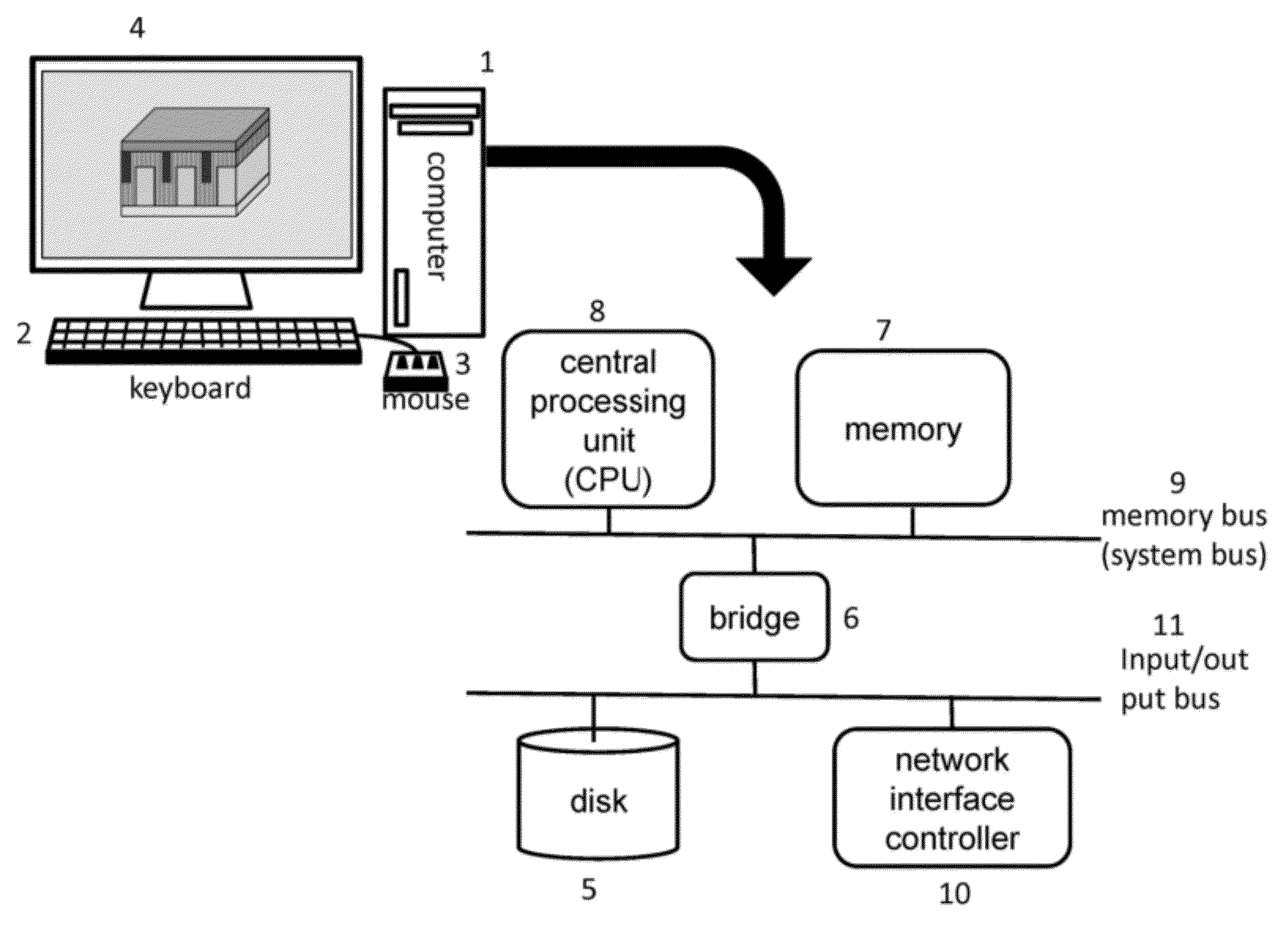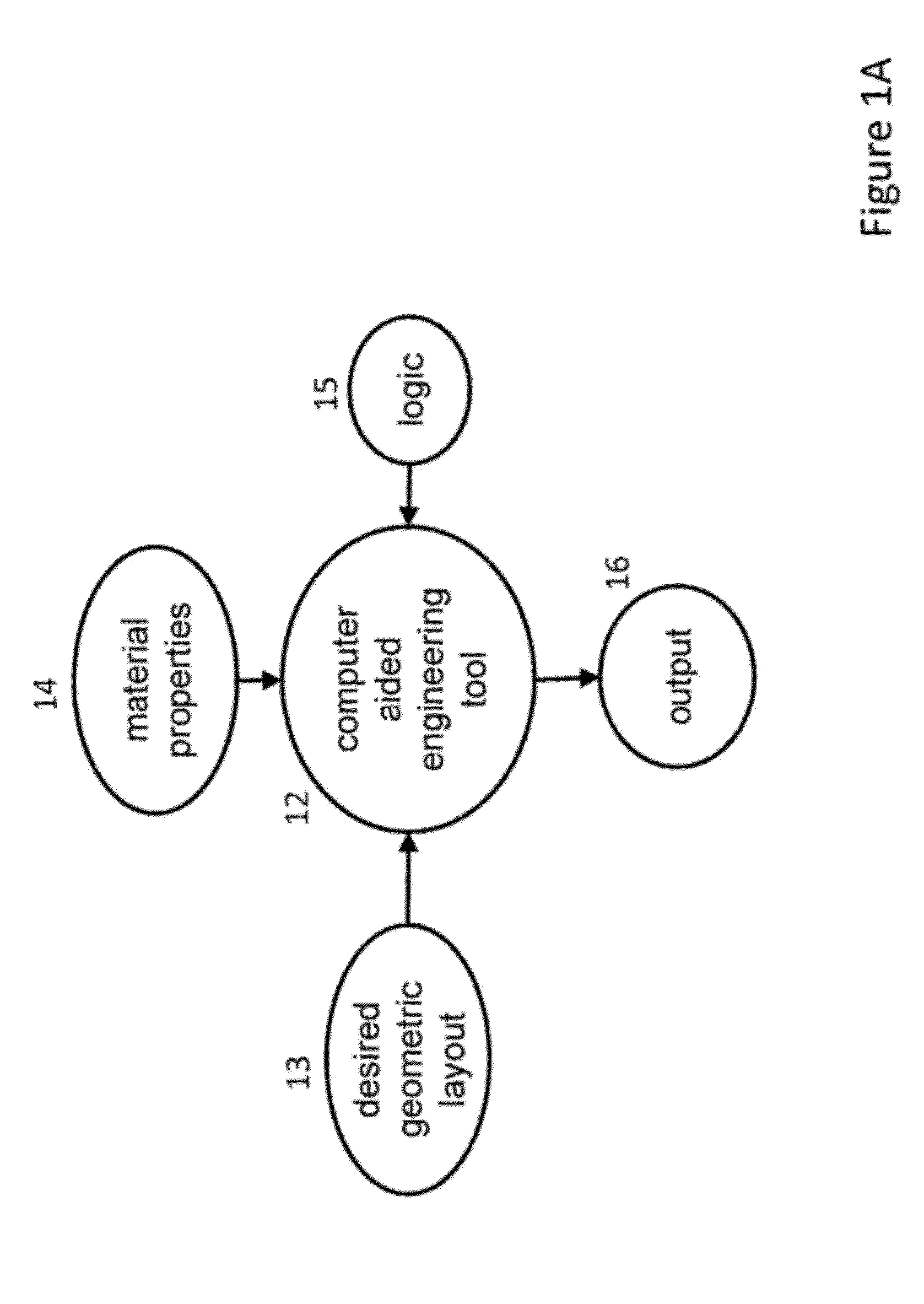Methods of inverse determination of material properties of an electrochemical system
a technology of electrochemical system and material properties, applied in secondary cell servicing/maintenance, instruments, cad techniques, etc., can solve the problems of time-consuming, tedious, and certain limitations still exist, and achieve the effect of cost-effectiveness
- Summary
- Abstract
- Description
- Claims
- Application Information
AI Technical Summary
Benefits of technology
Problems solved by technology
Method used
Image
Examples
example 1
Determination of Ionic Diffusivity of Cathode Material of an Electrochemical Cell
[0048]This example demonstrates the process of determination of ionic diffusivity of cathode material of an electrochemical cell. As an example of the problems encountered by the battery designer, the value of ionic diffusivity of cathode material for the present electrochemical cell setup is unknown. The materials for the electrochemical cell are copper as anode current collector, lithium metal as anode, lithium cobalt oxide as cathode, polymer with lithium salts as the electrolyte, and aluminum as cathode current collector. A separator is unnecessary because a polymer electrolyte is used. These materials used here are for illustrative purposes, but are not limited by these materials. A flow diagram is shown in FIG. 3. As in this example, the electrochemical cell is tested under 5C constant current discharge rate and discharge is shown as 201 in FIG. 4. On the other hand, numerical simulations of the e...
example 2
Determination of Thermal Expansion Coefficient of Cathode Material of an Electrochemical Cell
[0049]This example demonstrates the process of determination of thermal expansion coefficient of cathode material of an electrochemical cell. As an example of the problems encountered by the battery designer, the value of thermal expansion coefficient of cathode material for the present electrochemical cell setup is unknown. The materials for the partially completed electrochemical cell are lithium cobalt oxide as cathode as 703 in FIG. 7, and silicon wafer as substrate as 704 in FIG. 7. These materials used here are for illustrative purposes, but are not limited by these materials. A flow diagram is shown in FIG. 6. As in this example, the partially completed electrochemical cell is tested from 25° C. to 100° C. inside wafer bender thermal chamber as 701 in FIG. 7. Laser scan is used to measure top surface curvature of cathode layer as 702 in FIG. 7. On the other hand, numerical simulations...
example 3
Determination of Thermal Expansion Coefficient of Cathode Material of an Electrochemical Cell
[0050]This example demonstrates the process of determination of thermal expansion coefficient of cathode material of an electrochemical cell. As an example of the problems encountered by the battery designer, the value of thermal expansion coefficient of cathode material for the present electrochemical cell setup is unknown. The materials for the partially completed electrochemical cell are lithium cobalt oxide as cathode as 901 in FIG. 9, and a strain gauge as substrate as 902 in FIG. 9. A meter is used to read strain value from strain gauge as 903 in FIG. 9. These materials used here are for illustrative purposes, but are not limited by these materials. A flow diagram is shown in FIG. 8. As in this example, the partially completed electrochemical cell is tested from 25° C. to 150° C. inside wafer bender thermal chamber as 904 in FIG. 9. On the other hand, numerical simulations for the same...
PUM
 Login to View More
Login to View More Abstract
Description
Claims
Application Information
 Login to View More
Login to View More - R&D
- Intellectual Property
- Life Sciences
- Materials
- Tech Scout
- Unparalleled Data Quality
- Higher Quality Content
- 60% Fewer Hallucinations
Browse by: Latest US Patents, China's latest patents, Technical Efficacy Thesaurus, Application Domain, Technology Topic, Popular Technical Reports.
© 2025 PatSnap. All rights reserved.Legal|Privacy policy|Modern Slavery Act Transparency Statement|Sitemap|About US| Contact US: help@patsnap.com



